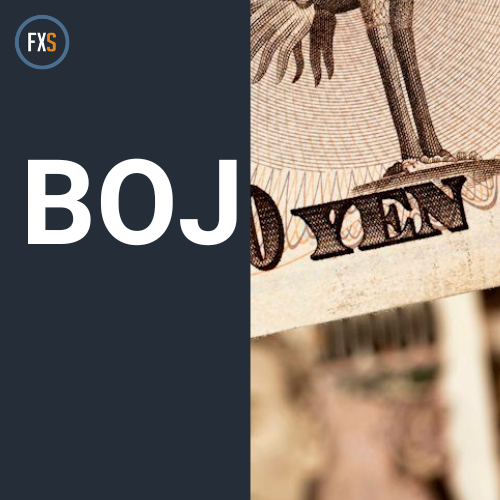Gold price sits near record high, looks to US PCE Price Index for fresh impetus
- Gold price consolidates near record high amid elevated US bond yields and renewed USD buying.
- US political jitters and Middle East tensions might continue to act as a tailwind for the XAU/USD.
- Traders keenly await the release of the US PCE Price Index before placing fresh directional bets.
Gold price (XAU/USD) trades with a mild negative bias heading into the European session on Thursday, albeit lacks follow-through and remains close to the all-time peak. Expectations for smaller interest rate cuts by the Federal Reserve, along with concerns about the increasing US fiscal deficit, continue to push the US Treasury bond yields higher. This, in turn, assists the US Dollar (USD) in stalling its corrective pullback from a three-month high touched earlier this week and acts as a headwind for the non-yielding yellow metal amid overbought conditions on the daily chart.
Any meaningful corrective decline for the Gold price, however, seems elusive amid persistent safe-haven demand stemming from the uncertainty surrounding the November 5 US presidential election and Middle East tensions. Traders might also refrain from placing aggressive directional bets and opt to move to the sidelines ahead of the release of the US Personal Consumption Expenditure (PCE) Price Index. This, along with the Nonfarm Payrolls (NFP) report on Friday, should provide cues about the Fed's interest rate outlook and provide a fresh impetus to the XAU/USD.
Daily Digest Market Movers: Gold price extends its consolidative price move amid mixed fundamental cues
- The Automatic Data Processing (ADP) reported on Wednesday that private sector employers added 233K new jobs in October as compared to the previous month's upwardly revised reading of 159K and better-than-expected consensus estimates.
- The data points to a resilient labor market, which, along with a series of upbeat US data released recently, suggested that the economy remains on strong footing and supports prospects for a less aggressive easing by the Federal Reserve.
- Separately, the US Bureau of Economic Analysis' initial estimate suggested that the world's largest economy expanded by a 2.8% annualized pace during the third quarter, slower than the 3% growth recorded during the April-June period.
- The markets are still pricing in a regular 25 basis points interest rate cut by the Fed in November, which, along with deficit-spending concerns after the US election, continues to push the US Treasury bond yields higher on Thursday.
- The yield on the benchmark 10-year US government bond hovers just below 4.3%, near its highest level since July, which helps revive the US Dollar demand and acts as a headwind for the Gold price amid slightly overbought conditions.
- Thursday's release of the US Personal Consumption Expenditure (PCE) Price Index might influence the Fed's rate-cut path and drive the USD demand, which, in turn, should provide some meaningful impetus to the commodity.
- The uncertainty ahead of next week's US presidential election and escalating geopolitical tensions in the Middle East suggest that the path of least resistance for the safe-haven precious metal remains to the upside.
Technical Outlook: Gold price overbought RSI on the daily chart warrants some caution for bullish traders
From a technical perspective, the recent move up along an upward-sloping channel from the August monthly swing low points to a well-established short-term bullish trend. That said, the Relative Strength Index (RSI) on the daily chart is already flashing overbought conditions. Hence, any subsequent move up is more likely to remain capped near the $2,800 mark. The said handle represents the top boundary of the channel, which if broken decisively will be seen as a fresh trigger for bulls and set the stage for an extension of the appreciating move.
On the flip side, any meaningful corrective decline now seems to find decent support near the $2,750-2,748 region or a trading range resistance breakpoint. Some follow-through selling could make the Gold price vulnerable to extend the fall further towards the $2,732-2,730 intermediate support en route to the $2,715 area. This is followed by the $2,700 mark, which if broken should pave the way for a decline towards the next relevant support near the $2,675 zone en route to the $2,657-2,655 region.
Interest rates FAQs
Interest rates are charged by financial institutions on loans to borrowers and are paid as interest to savers and depositors. They are influenced by base lending rates, which are set by central banks in response to changes in the economy. Central banks normally have a mandate to ensure price stability, which in most cases means targeting a core inflation rate of around 2%. If inflation falls below target the central bank may cut base lending rates, with a view to stimulating lending and boosting the economy. If inflation rises substantially above 2% it normally results in the central bank raising base lending rates in an attempt to lower inflation.
Higher interest rates generally help strengthen a country’s currency as they make it a more attractive place for global investors to park their money.
Higher interest rates overall weigh on the price of Gold because they increase the opportunity cost of holding Gold instead of investing in an interest-bearing asset or placing cash in the bank. If interest rates are high that usually pushes up the price of the US Dollar (USD), and since Gold is priced in Dollars, this has the effect of lowering the price of Gold.
The Fed funds rate is the overnight rate at which US banks lend to each other. It is the oft-quoted headline rate set by the Federal Reserve at its FOMC meetings. It is set as a range, for example 4.75%-5.00%, though the upper limit (in that case 5.00%) is the quoted figure. Market expectations for future Fed funds rate are tracked by the CME FedWatch tool, which shapes how many financial markets behave in anticipation of future Federal Reserve monetary policy decisions.
Forex News
Keep up with the financial markets, know what's happening and what is affecting the markets with our latest market updates. Analyze market movers, trends and build your trading strategies accordingly.



















